I am using a rectifier, and 4500uF capacitor to reduce the ripple. After connecting to the power source (60Hz, 120V), I was able to turn on the fan. The issue occurs when I turn the switch on to power the other load. Below is the schematic. After turning the switch on to power the processor, the fan would start slowing down. I have noticed that the ripple does increase after adding another load. I have tried adding multiple capacitor on the output of the rectifier, and it would only increase the delay in fan slowing down. I am positive that the rectifier can output more than 20Amps. Both the load added takes in less that 11Amps.
Is there anything I can add to this circuit to help reduce the effect on the fan when the switch has been turned on to power the processor?
